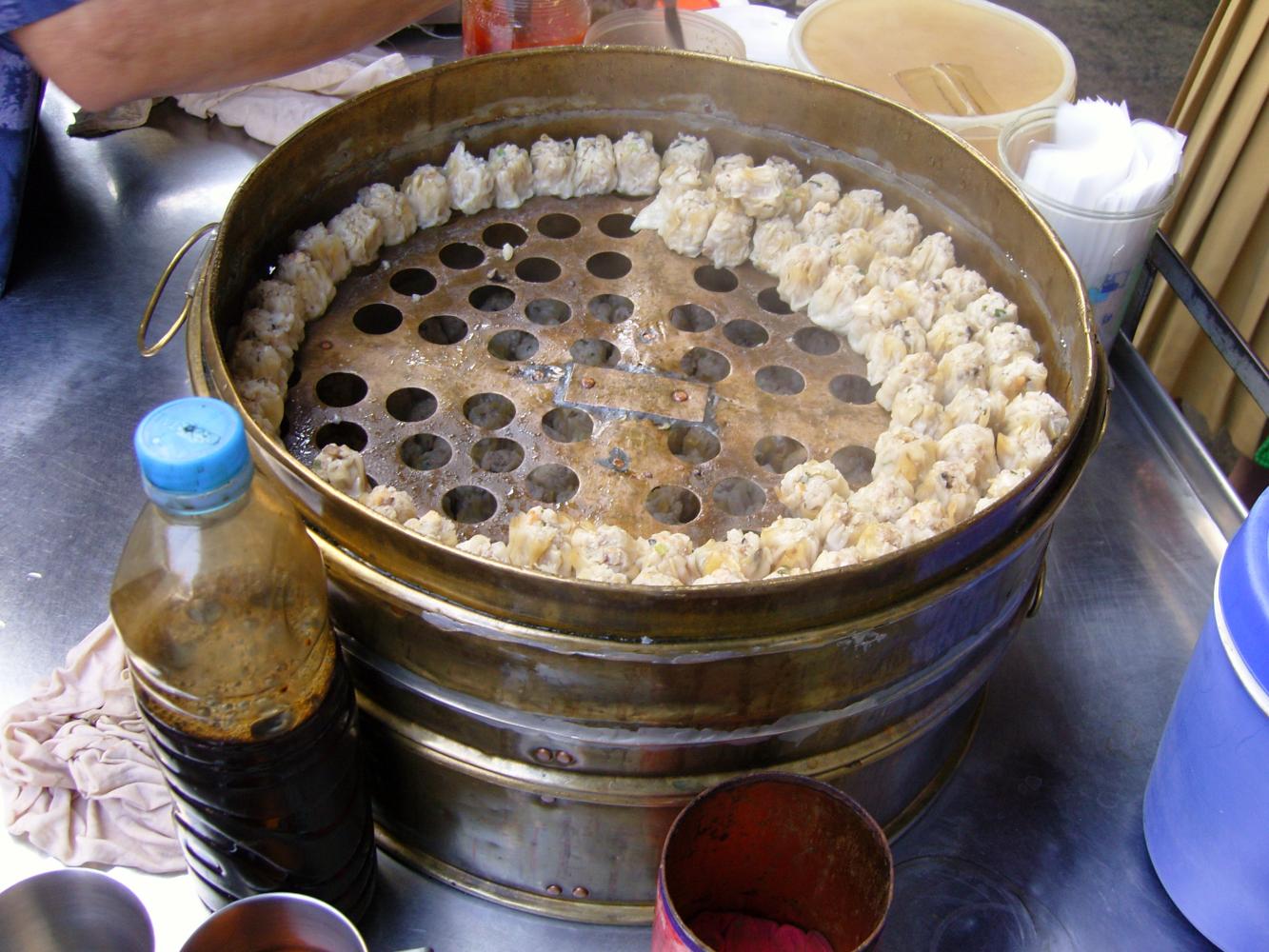About 80 years ago, the Chinatown along Charoen Krung and Yaowarat roads was a bustling commercial centre. The places were like a gigantic department store selling everything. People from around the country knew they could find all types of goods there.
For more specific and peculiar merchandise, Plang Nam, a road linking Yaowarat and Charoen Krung roads, was the place to go. There were specialised shops non-existent elsewhere. For example, there were shops selling oil lamps that came in different sizes and brands; shops selling and repairing Chinese music instruments; stores selling kitchenware, cookery tools, Chinese-style enamel trays and earthenware for use in making soup or preparing Chinese traditional medicine. Several Chinese drug stores offered Chinese herbal products. A few shops provided all sorts of desserts and confectionery used in Chinese festivals and assorted offerings for Chinese shrines. A popular kun chiang shop making top-quality Chinese sausage was also located on Plang Nam Road.

Suthon Sukphisit
Those who lived in Charoen Krung and Yaowarat shopped for food at a fresh market behind Plang Nam Road. The market opened as early as 4am. All types of ingredients for cooking Chinese dishes were available there. Shoppers had choices to buy small packets for home cooking or large packages for restaurant use. Some particular item such as shark meat was available solely at this market. The Chinese liked to cook shark meat by frying it with ginger.

Suthon Sukphisit
After decades of existence, shophouses on both sides of Plang Nam Road have undergone some changes. Some traditional shops were closing and new shops took their places. Nai Mong Hoi Tod had moved to a new location and is now replaced by a stainless steel products shop. Several new shark fin soup restaurants opened. A khao tom shop and ready-to-eat food store located on the end of the road adjacent to Charoen Krung Road are open 24 hours. A stall selling nam pla wan and mangoes has remained at its original site on the Yaowarat side. A shop selling dumplings steamed in a brass steamer has stayed put in front of Wat Kusol Samakhom.

Suthon Sukphisit
A fresh market behind Plang Nam Road opens in the morning and closes at midday. A section of the market then transforms to a large fishball making spot. Fishballs made here are distributed to noodle shops around Bangkok. In the afternoon, a stall selling fishball noodles is set up near the market exit on Charoen Krung Road.
More drastic changes have occurred with the construction of MRT station at the end of Plang Nam Road on Charoen Krung side. One of the two khao tom shops has relocated elsewhere. The other moved to the middle of the road. Chinese herbal shops have closed down as traditional remedies no longer suits the modern lifestyle. Several music instrument shops are still open, but some have switched to offering repair services only. Lamp shops have become more like lamp museums with old models kept for display only, not for sale.
Plang Nam Road has gained more popularity upon the opening of the MRT station. It has become one of the most popular walking streets. Every square inch of land in this area is worth like a gold mine.

Suthon Sukphisit
Almost 100% of people coming to Plang Nam are keen on culinary stuff. They come to dine at restaurants, have some takeaways and buy home some food products. Kuang Hok Kee, a Chinese sausage shop is now operated by the second generation. Its sale has steadily increased thanks to its reputation accumulated by the parents. This shop makes different varieties of kun chiang including the extra-long, large-size with extra fat for serving with khao moo daeng dish.
Dumplings steamed in brass steamer sell like hot cakes. Customers even travel right to the home of the vendors to buy some before the shop is open.
The khao tom shop that had moved to the middle of Plang Nam Road sells even better than before. Chinese tourists who travel to the Chinatown love it.
Traditional and authentic khao tom ped (rice in duck soup), khao tom mu sab (rice in minced pork soup), and pig stomach soup attract a lot of tourists. Khao man kai, red pork noodle with crabmeat are also very popular. These are simple menus but diners are very much looking forward to.

Plang Nam in the old days was a trade centre as well as residential area. Majority of the residents were Chinese. Thus, there are a few original Chinese restaurants located in small alleys inside the communities. Some of them remain unknown to tourists.
For example, a Chinese-style made-to-order shop on Pipaksa 1, behind Plang Nam Road, called Raan Je Ju. It sells vegetarian in the morning and Chinese at lunchtime. It is credited with making ordinary dishes that people eat in everyday life, unlike the sophisticated dishes prepared by big Chinese restaurants. Plang Nam has been a special place for more than 80 years. It has undergone changes through time, but remains true to its roots despite the changing circumstances.

